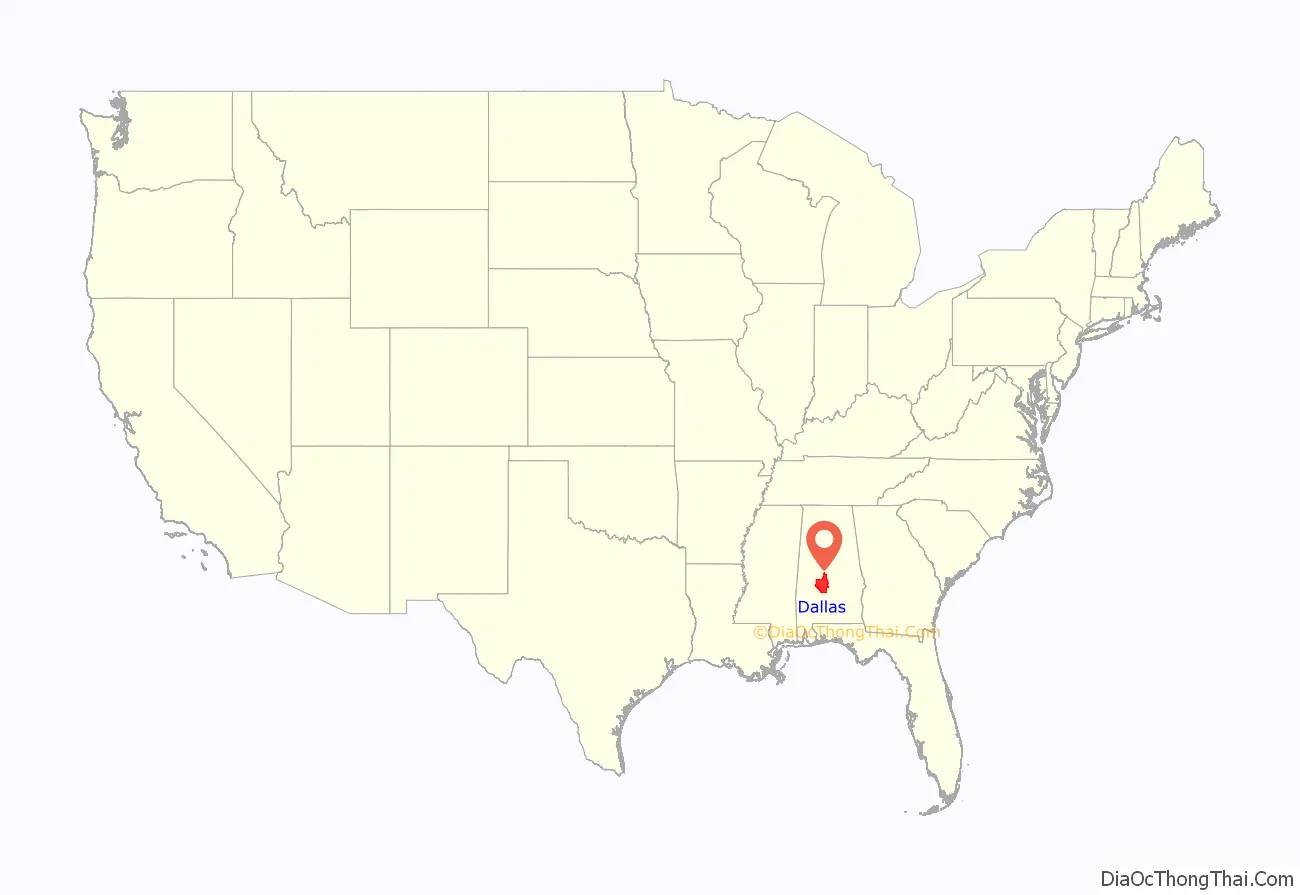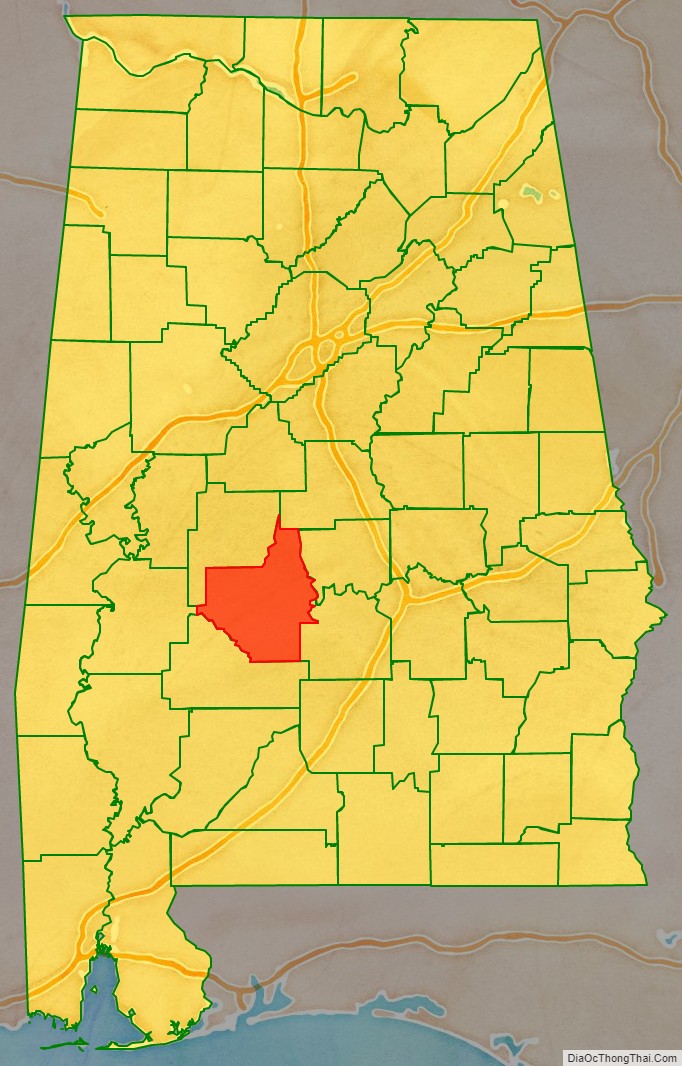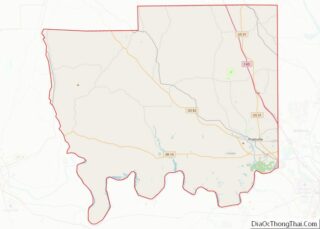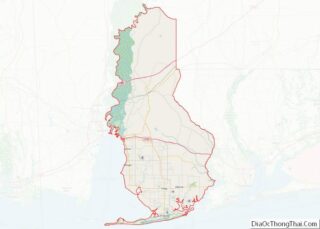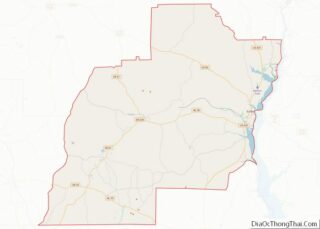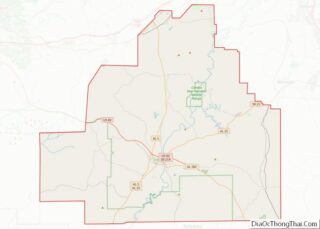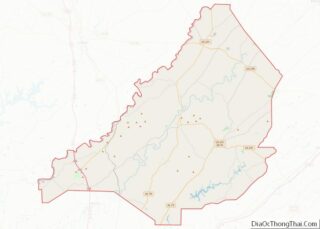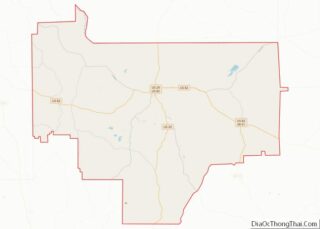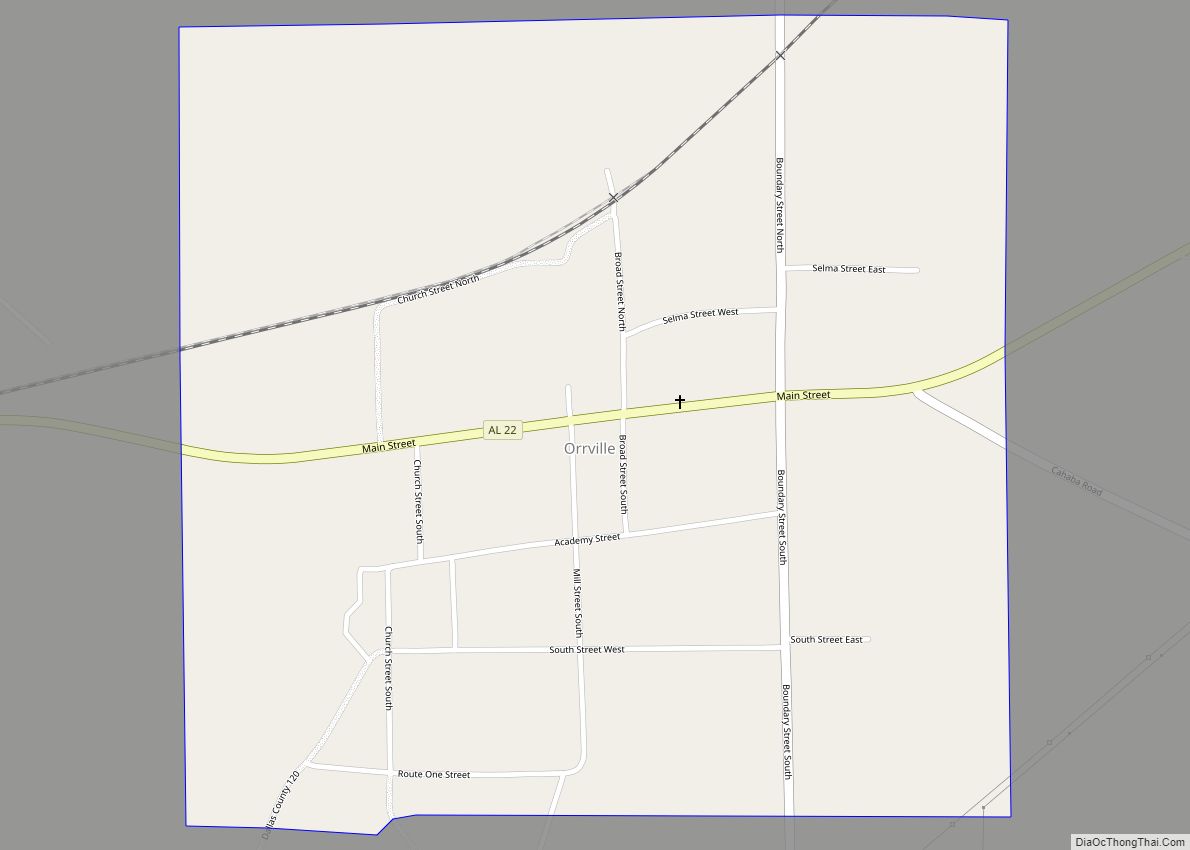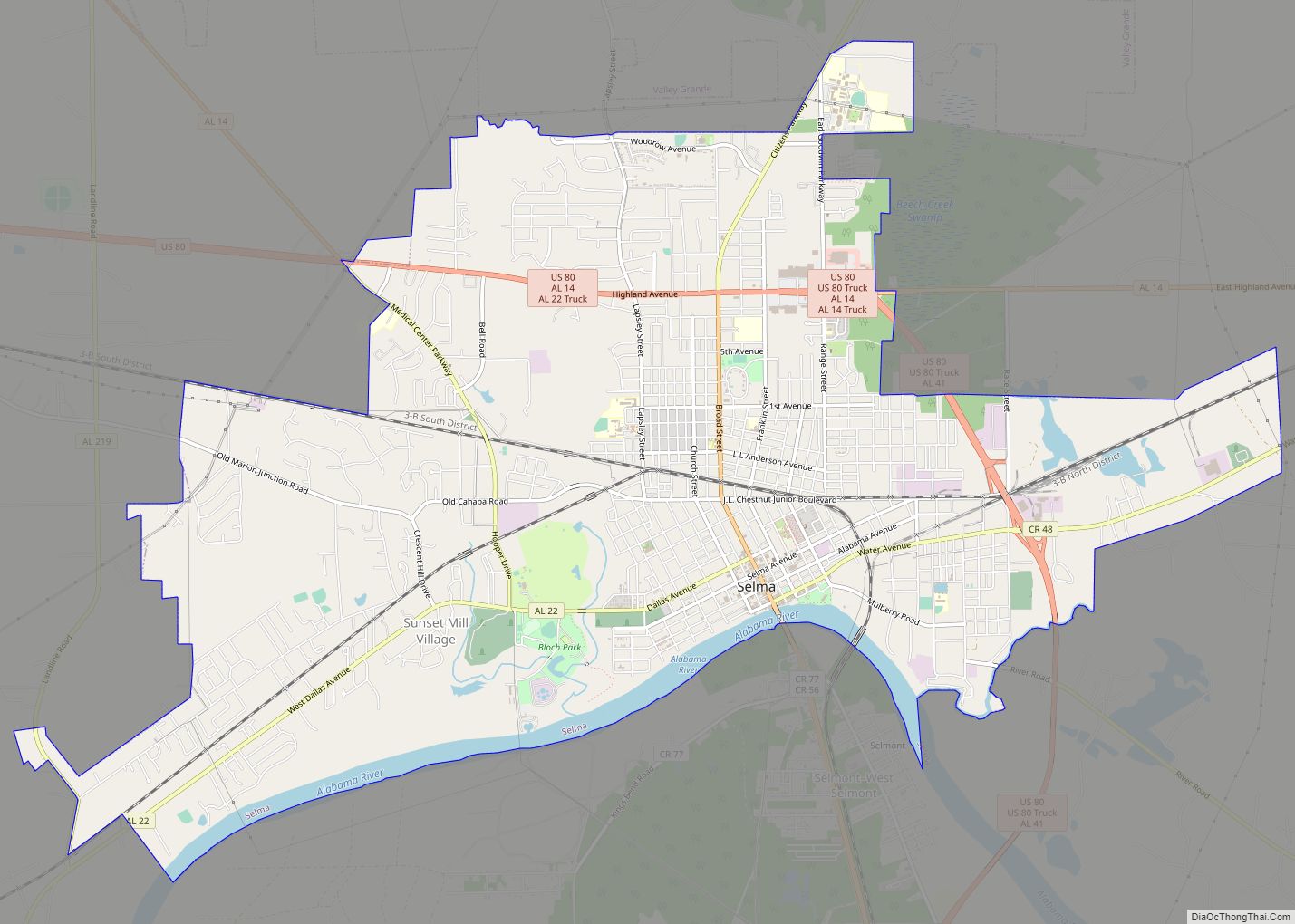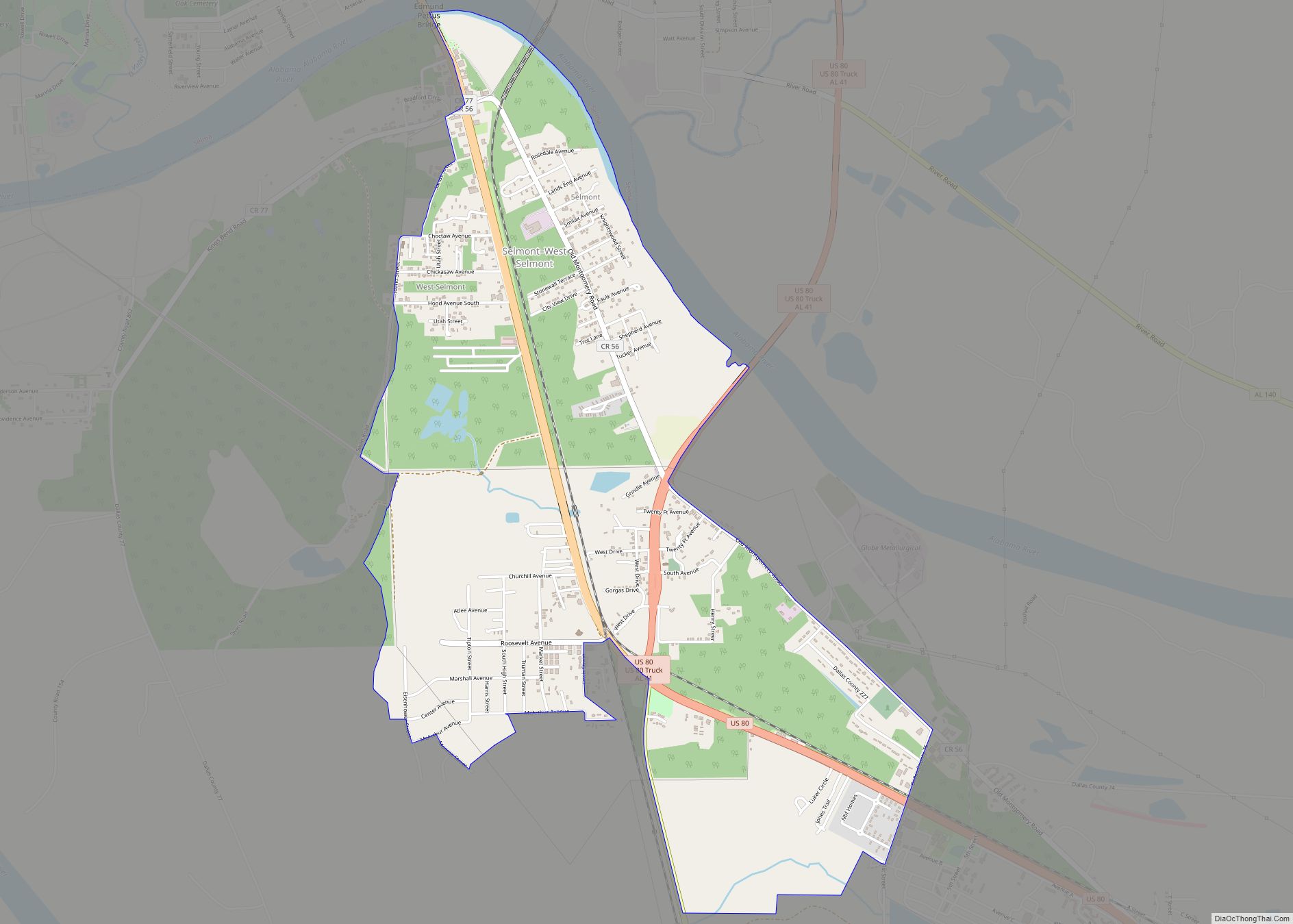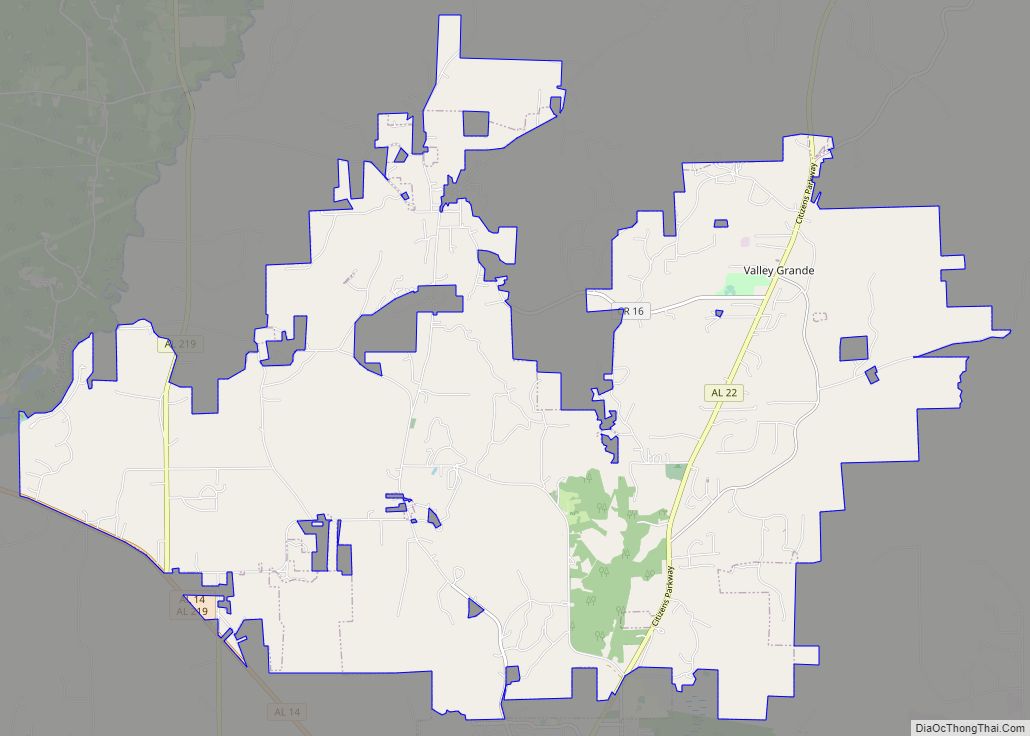Dallas County is a county located in the central part of the U.S. state of Alabama. As of the 2020 census, its population was 38,462. The county seat is Selma. Its name is in honor of United States Secretary of the Treasury Alexander J. Dallas, who served from 1814 to 1816.
Dallas County comprises the Selma, AL Micropolitan Statistical Area.
| Name: | Dallas County |
|---|---|
| FIPS code: | 01-047 |
| State: | Alabama |
| Founded: | February 9, 1818 |
| Named for: | Alexander J. Dallas |
| Seat: | Selma |
| Largest city: | Selma |
| Total Area: | 994 sq mi (2,570 km²) |
| Land Area: | 979 sq mi (2,540 km²) |
| Total Population: | 38,462 |
| Population Density: | 39/sq mi (15/km²) |
| Time zone: | UTC−6 (Central) |
| Summer Time Zone (DST): | UTC−5 (CDT) |
| Website: | www.dallascounty-al.org |
Dallas County location map. Where is Dallas County?
History
Dallas County was created by the Alabama territorial legislature on February 9, 1818, from Montgomery County. This was a portion of the Creek cession of lands to the US government of August 9, 1814. The Creek were known as one of the Five Civilized Tribes of the Southeast. The county was named for U.S. Treasury Secretary Alexander J. Dallas of Pennsylvania.
Dallas County is located in what has become known as the Black Belt region of the west-central portion of the state. The name referred to its fertile soil, and the area was largely developed for cotton plantations, worked by enslaved African Americans in the antebellum period. After emancipation following the Civil War, many of the African Americans who stayed in the area worked as sharecroppers and tenant farmers. The county has been majority black since before the war because of the numerous slaves who worked the plantations.
Dallas County produced more cotton by 1860 than any other county in the state, requiring a large supply of workers, which were drawn from enslaved people. Dallas County slave owners on average had seventeen enslaved workers (compared to ten in Montgomery County, for instance); slave owners made up some 16% of the county’s white population, but if their families are added, at least a third of the county’s population was attached to a slaveholding family, according to historian Alston Fitts.
Well-known local slaveowners include Washington Smith, owner of a big plantation in Bogue Chitto, Alabama, near Selma, and founder of the Bank of Selma, who even after Emancipation continued to exert great influence over the African-American people in the county. Smith had bought Redoshi, on whom he forced the name Sally Smith, a West-African woman from Benin who had been kidnapped at age 12 and sold after being transported on the Clotilda, which carried enslaved Africans to America over 50 years after the slave trade had been abolished.
The county is traversed by the Alabama River, flowing from northeast to southwest across the county. It is bordered by Perry, Chilton, Autauga, Lowndes, Wilcox, and Marengo counties. Originally, the Dallas county seat was at Cahaba, which also served as the state capital for a brief period. In 1865, the county seat was transferred to Selma, Alabama as the center of population had moved. Other towns and communities in the still mostly rural county include Marion Junction, Sardis, Orrville, Valley Grande, and Minter.
20th century to present
Cotton production suffered in the early 20th century due to infestation of boll weevil, which invaded cotton areas throughout the South. At the turn of the 20th century, the state legislature disenfranchised most blacks and many poor whites through provisions of a new state constitution requiring payment of poll tax and passing a literacy test for voter registration. These largely survived legal challenges and blacks were excluded from the political system.
The period from 1877 to 1950 (and especially 1890 through 1930), was the height of lynchings across the South, as whites worked to impose white supremacy and Jim Crow. According to the third edition of Lynching in America, Dallas County had 19 lynchings in this period, the second-highest number of any county in the state after Jefferson County. The lynching mobs killed suspects of alleged crimes, but also for behavior that offended a white man, and for labor organizing. In the early and mid-20th century, a total of 6.5 million blacks left the South in the Great Migration to escape these oppressive conditions.
In the postwar era of the 1950s and 1960s, African Americans, including many veterans, mounted new efforts across the South to be able to exercise their constitutional right as citizens to register and vote.
The still mostly rural county reached a peak of population in 1960. Younger people have since left to seek work elsewhere. The county is working on new directions for economic development.
From 1963 through 1965, Selma and Dallas County were the sites of a renewed Voting Rights campaign. It was organized by locals of the Dallas County Voters League (DCVL), and joined by activists from Student Nonviolent Coordinating Committee (SNCC). In late 1964 they invited help from the Southern Christian Leadership Conference (SCLC); with SCLC president Martin Luther King Jr. participating, this campaign attracted national and international news in February and March 1965. They planned a march from Selma to the state capital of Montgomery, Alabama. Two activists were killed during demonstrations before the final march took place.
On March 7, several hundred peaceful marchers were beaten by state troopers and county posse after they passed over the Edmund Pettus Bridge and into the county, intending to march to the state capital of Montgomery. The events were covered by national media. The protesters renewed their walk on March 21, having been joined by thousands of sympathizers from across the country and gained federal protection, to complete the Selma to Montgomery marches. More people joined them, so that some 25,000 people entered Montgomery on the last day of the march. In August of that year, Congress passed the Voting Rights Act of 1965, which was signed by President Lyndon B. Johnson. Millions of African-American citizens across the South have registered and voted in the subsequent years, participating again in the political system.
On March 5, 2018, Selma commemorated these marches. In addition, the city conducted a Community Remembrance Project, unveiling a new historic marker to memorialize the 19 African Americans who were lynched in Dallas County by whites during the late 19th and up to mid-20th century in acts of racial terrorism. This was done in cooperation with the Equal Justice Initiative, which published a report in 2015 that documented nearly 4,000 such lynchings, as well as Selma Center for Nonviolence Truth and Reconciliation at Healing Waters Retreat Center, Selma: Truth, Racial Healing & Transformation, and the Black Belt Community Foundation.
Dallas County Road Map
Geography
According to the United States Census Bureau, the county has a total area of 994 square miles (2,570 km), of which 979 square miles (2,540 km) is land and 15 square miles (39 km) (1.5%) is water.
Adjacent counties
- Chilton County (north)
- Autauga County (northeast)
- Lowndes County (southeast)
- Wilcox County (south)
- Marengo County (west)
- Perry County (northwest)
National protected areas
- Selma to Montgomery National Historic Trail (part)
- Talladega National Forest (part)
